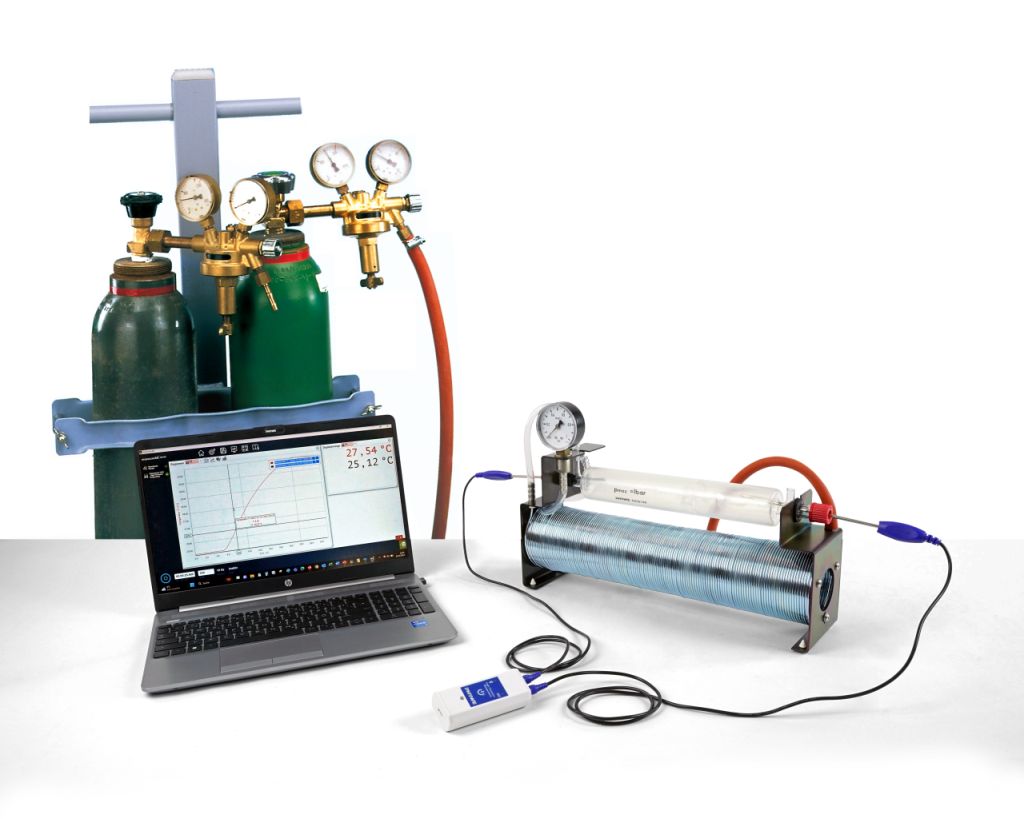Principle
A stream of gas is fed to a throttling point, where the gas (CO2 or N2) undergoes adiabatic expansion. The differences in temperature established between the two sides of the throttle point are measured at various pressures and the Joule-Thomson coefficients of the gases in question are calculated.
Benefits
- For both demonstration and student experiments
- With detailed experiment guide
- Affordable set-up
Tasks
- Determination of the Joule-Thomson coefficient of CO2.
- Determination of the Joule-Thomson coefficient of N2.
Learning objectives
- Real gas
- Intrinsic energy
- Gay-Lussac theory
- Throttling
- Van der Waals equation
- Van der Waals force
- Inverse Joule-Thomson effect
- Inversion temperature
